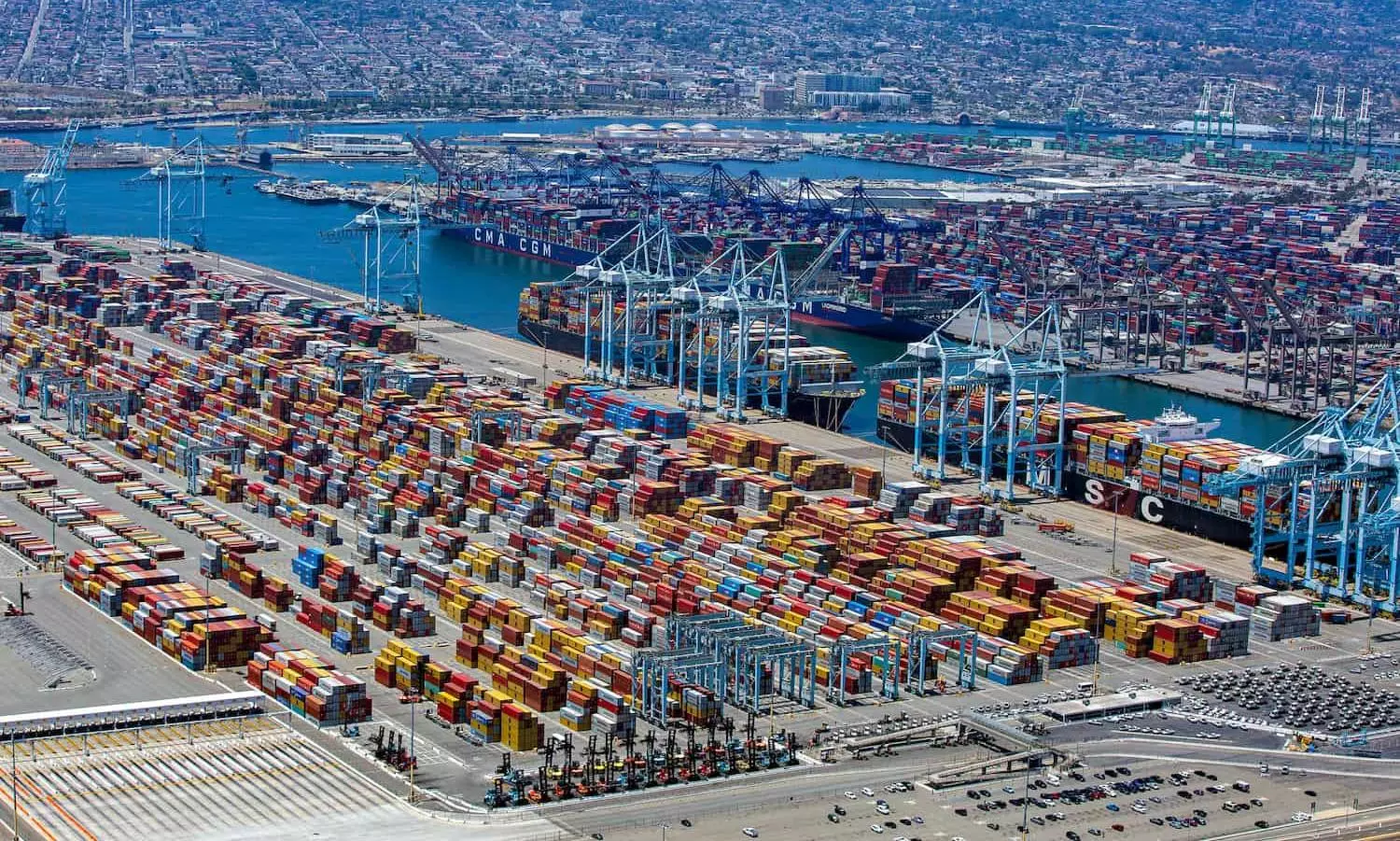Long-term container shipping rates lower than spot rates: Xeneta
Container ships are still sailing around the Cape of Good Hope & there is no guarantee the situation will change in 2025

Photo Credit: Port of Los Angeles
Ceasefire in the Middle East has raised hopes of a large-scale return of container ships to the Red Sea.
"If this does happen, it could see freight rates collapse due to increased capacity in the market caused by carriers taking the shorter route through the Suez Canal coupled with record-breaking deliveries of new ships," according to the latest update from Xeneta.
On the other hand, the majority of container ships are still sailing around the Cape of Good Hope and there is no guarantee the situation will change in 2025, the update added. "With average spot rates still up 142 percent from the Far East to the U.S. East Coast, 100 percent into North Europe and 135 percent into the Mediterranean, this presents a conundrum for both carriers and shippers when agreeing the right price to strike during long-term contract negotiations."
When comparing long-term contracts which entered validity on January 1, 2025 against those from January 1, 2024, rates are increasing on seven out of the nine global fronthaul trades included in the Xeneta top 13 trades, the update added.
"From the Far East to North Europe, long-term rates are up 57 percent compared to a year ago. From the Far East to U.S. East Coast and U.S. West Coast, long-term rates are up 44 percent and 64 percent, respectively. On all of these trades, the new long-term rates are considerably below the current average spot rates."
So, there is a clear difference in the rates being offered by carriers for long-term contracts lasting less than six months compared to contracts lasting more than six months, the update added.
"From the Far East to North Europe, carriers were agreeing discounts of 28 percent if shippers agreed to a contract greater than six months. From the Far East to the U.S. East Coast and U.S. West Coast, the discounts were 13 percent and two percent, respectively (it should be noted U.S. shippers aren’t as far into the tender season so this figure could rise).
"This is a fascinating negotiating dynamic between the seller and buyer. On the one hand you have the seller trying to incentivise longer term agreements to manage risk and protect market share. On the other hand, you have the buyer doing everything possible to keep their options open for as long as possible while not spending more than necessary."
Some shippers may be happy to lock in for more than six months if it protects their supply chains and negates the need for further negotiation in the event of another major global disruption. Other shippers may choose to gamble on being able to achieve a lower rate in a few months’ time and are happy to go through another tender round. The outcome will depend very much on the tolerance of risk on each side of the table, the update added.


